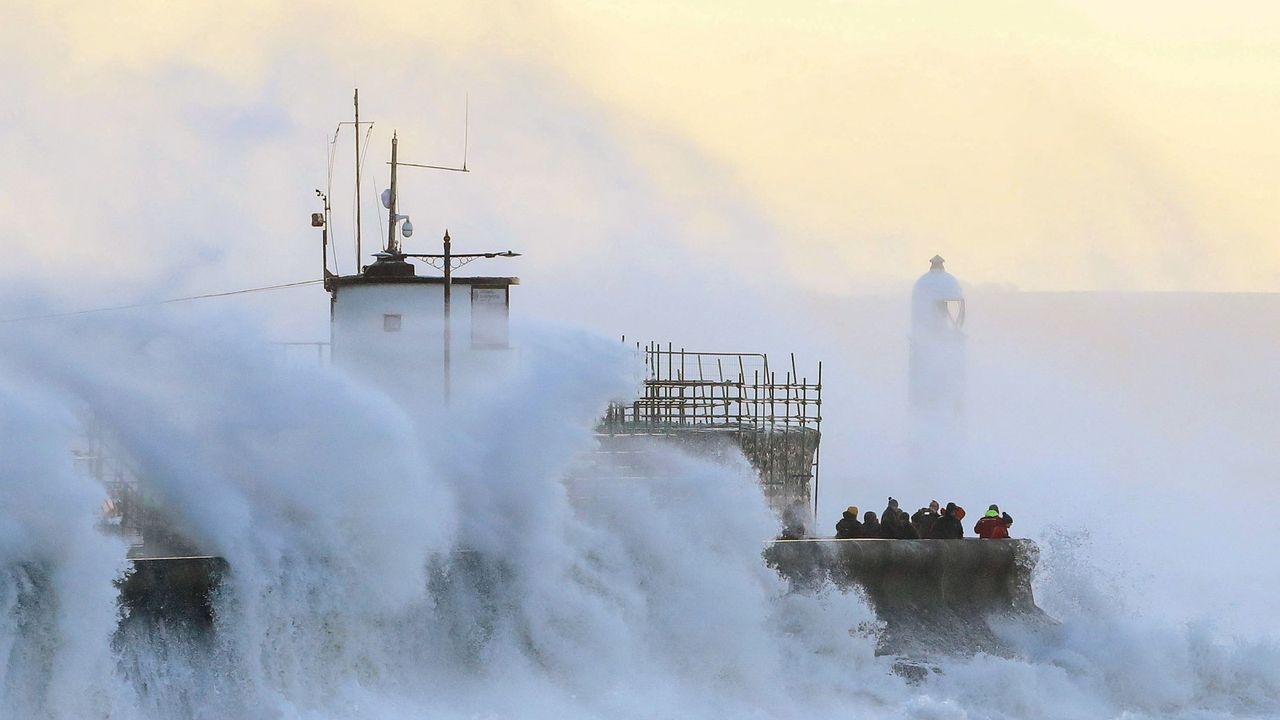Why do storms have names and why are they named alphabetically?
Storm Arwen, Storm Barra, Storm Eunice—what's with all these names?


From the recent Storm Eunice to the looming Storm Gladys, storm names have dominated the headlines over the past month—but where on earth does this personification of weather come from?
Unless you've been living under a rock this past month, there's a high chance you're aware of the torrent of storms that have struck the UK and Ireland this February.
The end of Storm Dudley last week brought way to the onset of Storms Eunice and Franklin, which, apparently, will now be replaced by Storm Gladys.
The volatile weather conditions have left many people in dire circumstances, as widespread flooding and power outages ravage homes and businesses across the nation. Tragically, three people have been killed by toppled trees and flying debris over the past week.
With all this talk about storms, folks are now desperate to brush up on their knowledge of the hazardous weather events—starting with the obvious question, why are storms named after people?
Why do storms have names?
If you've ever wondered why do storms have names, you're not alone. The question has left many people scratching their heads in confusion, especially considering the practice is relatively new to the UK.
Simply put, storms have names because it makes them easier to keep track of, which, in turn, helps to make the public more conscious of them. The strategy was introduced by the Met Office in 2014 after the UK weather service realized how effective it's been in keeping people safe in other countries—and it looks like it's here to stay.
Sign up for the woman&home newsletter
Sign up to our free daily email for the latest royal and entertainment news, interesting opinion, expert advice on styling and beauty trends, and no-nonsense guides to the health and wellness questions you want answered.
"We have seen how naming storms elsewhere in the world raises awareness of severe weather before it strikes," Derrick Ryall, Public Weather Service at the Met Office, explained.
Windstorm Abigail in 2015 was the first storm to be named in the UK, and since then, dozens of other storms have been given their own monikers.
Why are storms named after people?
While the UK and Ireland have only started naming storms after people in the last ten years, the practice actually dates back to the 1800s.
Hurricanes were originally named in honor of saints in the Caribbean, with the tradition reportedly beginning with the 1825 Santa Ana storm in Porto Rico.
Towards the end of the century, British-born meteorologist Clement Wragge decided to give tropical storms female names from Greek and Roman mythology. The practice died out in the earlier years of the 20th century but resumed during World War II, when Air Force and Navy meteorologists began naming cyclones after their beloved wives and girlfriends.
In 1953, the United States officially adopted a naming system for storms. Australia followed suit in 1963, as did its next-door neighbor, New Zealand.
Why are storms named alphabetically?
Storms are named alphabetically for a boring reason—it simplifies the process. With an infinite amount of names to choose from, it's easier for the Met Office to stick to the A-Z pattern when baptizing an important weather event.
Every September, the UK weather service publishes an alphabetic list of names to be used in the forthcoming storm cycle. These names alternate between male and female names, with an emphasis on short, concise names to help maximize the public's understanding. Since November 2021, the UK has been struck by six storms—Arwen, Barra, Corrie, Dudley, Eunice, and Franklin.

Hailing from the lovely city of Dublin, Emma mainly covers the Royal Family and the entertainment world, as well as the occasional health and wellness feature. Always up for a good conversation, she has a passion for interviewing everyone from A-list celebrities to the local GP - or just about anyone who will chat to her, really.
Emma holds an MA in International Journalism from City, University of London, and a BA in English Literature from Trinity College Dublin.
-
 Want to know how to fake tan your back without bending like a pretzel? Three tanning experts explain
Want to know how to fake tan your back without bending like a pretzel? Three tanning experts explainYou don't need to be a contortionist to tan your own back, you just need these tips
By Jess Beech Published
-
 Brighten even the gloomiest spots in your garden with these 8 shade-loving plants
Brighten even the gloomiest spots in your garden with these 8 shade-loving plantsTry these brilliant plants for shade to make the most of your outdoor space, including flowering shrubs and a type of ornamental grass
By Holly Crossley Published